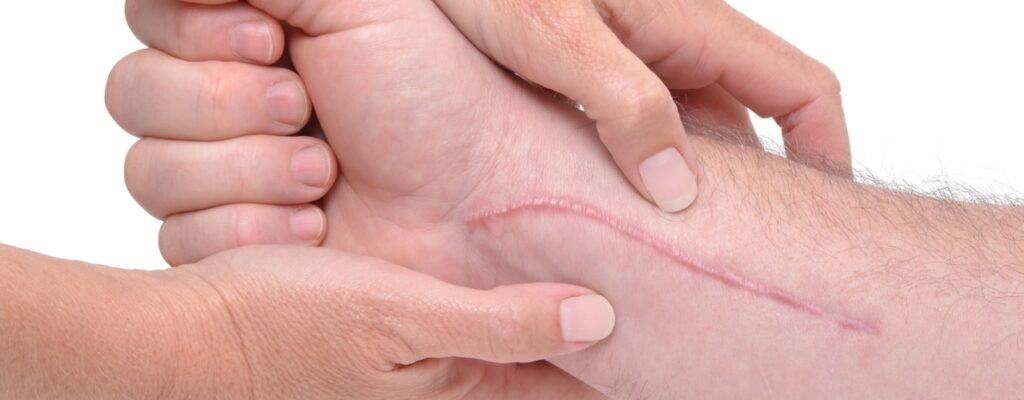Scars – All You Want and Need to Know for Healing

What is Scar Tissue?
Scar tissue is a collection of cells and collagen that covers the site of an injury. It can develop on the skin as a result of an injury or surgery. The body repairs itself by growing new tissue to bring together the wound edges and fill in any gaps caused by the injury. While scar is necessary to heal, it can also become a barrier to full recovery. Scar often becomes too thick, sticking to underlying tissue, preventing motion, and causing pain.
What Can I do to Help Scarring?
Scar mobilization is the use of hands or tools to move tissue on, around and below the scar to restore mobility. Scar tissue is much stiffer and thicker than the surrounding tissue, and sometimes it gets stuck and adhered to the surrounding tissue. The deeper the scar forms, the more layers of skin, muscle and connective tissue that can get stuck together and present motion and cause pain. Scar mobilization is an essential component to any post-op rehab.
Massaging and mobilizing the scar will help with regaining skin and tissue mobility, decreasing muscle tightness, and decreasing the sensitivity of the scar and tissue surrounding it. Scar massage helps to produce a smoother, moveable scar, allowing you and your nerves and tendons to move more and with less pain. You can use any type of over-the-counter cream such as Vaseline, cocoa butter or hand lotion for scar mobilization.
One way to massage a scar is to place the flat part of your fingers above or to the side of the scar and move the skin and tissue under it downward towards the scar but not over it. You can also do some clockwise and counterclockwise circles around and over the scar tissue. You should massage your scar for 3-5 minutes, 2 to 3 times a day for up to 6 months to 1 year after surgery, depending on your rate of scar healing and remodeling.
Does Silicone Help?
Yes, silicone can help with scar healing and remodeling. Silicone gel heals scars by increasing hydration of the stratum corneum (the uppermost layer of the skin). This facilitates regulation of fibroblast production and also reduces collagen production. Essentially, this allows skin to “breathe”, resulting in a softer and flatter scar1.
Silicone gel can be placed on the scar in sheets or in liquid form. Silicone sheets can be washed with soap and water and re-used. Liquid silicone gel dries as a very thin layer and will stay on skin surfaces that move throughout the day. Silicone scar management techniques are best used 12-24 hours a day and up to 3-6 months depending on rate of remodeling2.
Ask your Certified Hand Therapist, surgeon, or a medical provider who regularly treats individuals with scar for recommendations on what products or techniques are best for your case. Not all products regularly seen on store shelves are effective.
